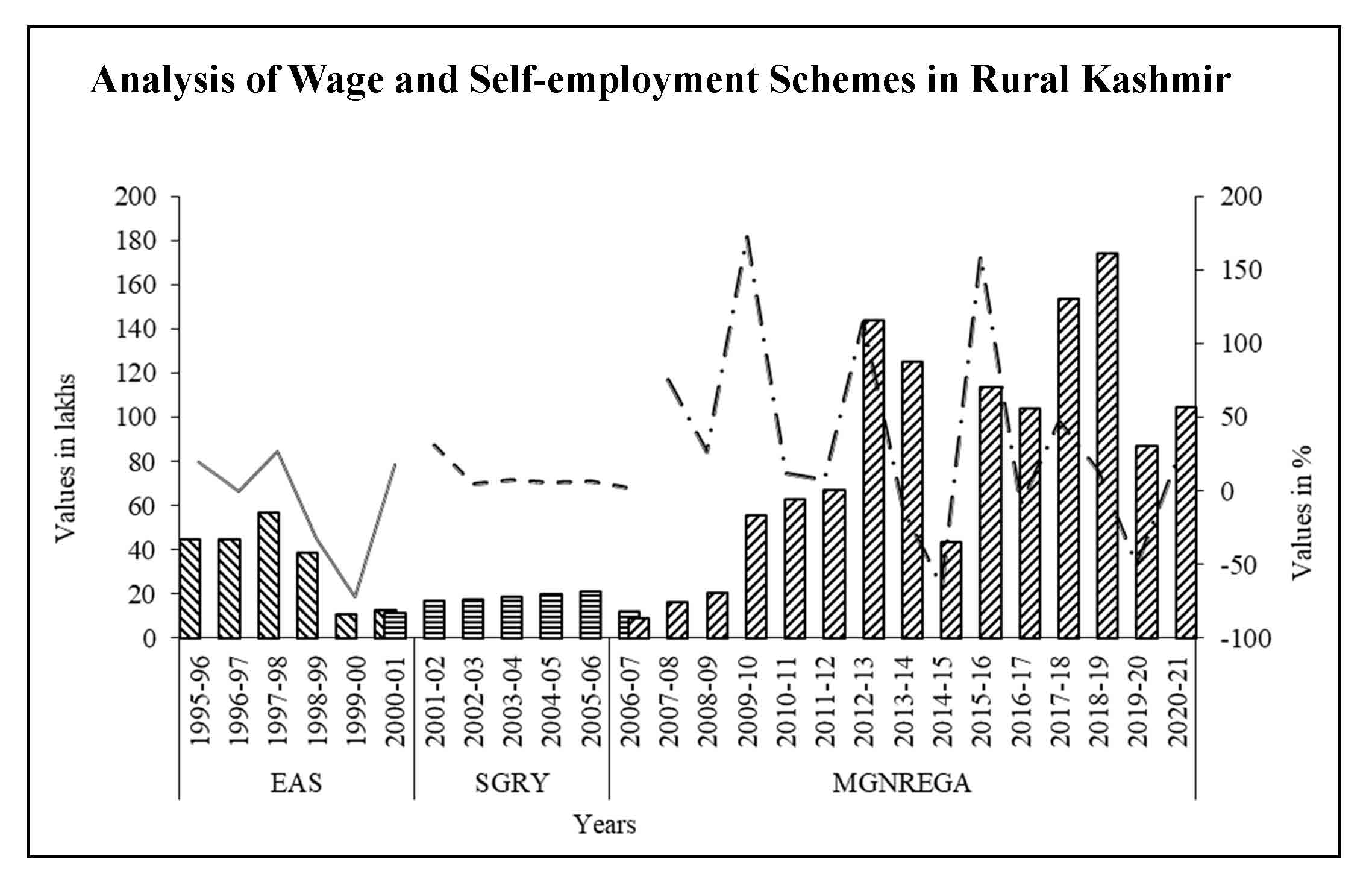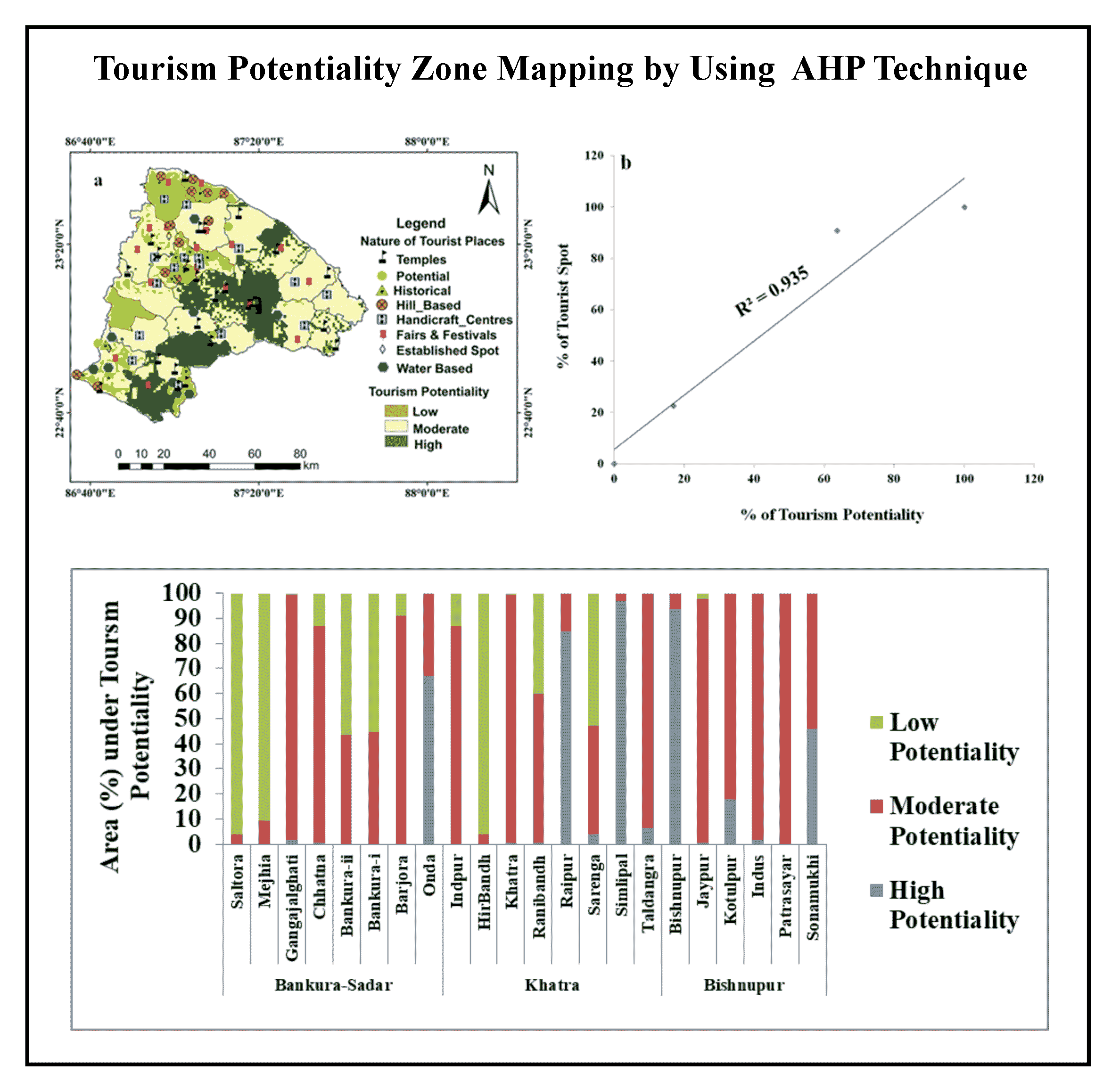Article Title :
Micro Level Analysis of Wage and Self-employment Schemes in Rural Kashmir, Jammu and Kashmir, India 
7 (2023)
14-25
Self-employment , Schemes , Poverty , Knowledge index , Empowerment


Poverty eradication and employment creation have been central objectives of planners and policymakers in developing countries like India. As a backdrop, a significant number of schemes were created to generate employment and foster long-term economic growth. This article examines the influence of employment initiatives on employment generation and economic upliftment in rural area of Kashmir. Both primary and secondary data sources are employed in this study. The data was analyzed by using a log-linear regression model and correlation analysis. Knowledge Index was used to determine respondents’ awareness of employment programs. The findings indicate a linkage between the amount of money spent and the creation of employment opportunities. The findings also demonstrate that changes in people’s income have the major impact on family expenditure, hospital and medical costs, children’s education, and household savings. Finally, the study concluded that increasing employment days and rural credit will result in more revenue in people’s hands and improved economic empowerment.

The fund utilization has a significant impact on the employment generation.
Fluctuating trends in terms of employment generation has been observed.
MGNREGA has been the better wage employment program than earlier schemes.
On an average 43.36 days of employment has been provided to beneficiaries annually under MGNREGS.
The participation in schemes has resulted in overall improvement in the welfare of people.
Low wages, delayed payments, corruption, long procedures, low subsidies are the loopholes associated with these schemes.
Bhalla, G.S. and Singh, G., 2013. Economic Liberalisation and Indian Agriculture: A District-level Study. Sage Publications India Private Limited, New Delhi.
Chadha, G. K. 2003. Rural employment: Current situation, challenges and potential for expansion: Issues in employment and poverty. A Discussion Paper, Recovery and Reconstruction Department, International Labour Office, Geneva.
Chadha, G. K., 1997. Employment for rural households in India: Past trends and future choices. Mohanty B. Employment Perspectives in Rural India, APH Publishing Co., New Delhi, 34-41.
Chileshe, N., Haupt, T. C. and Fester, F., 2005b. Desirable Construction ManagementSkills in the South African Construction Industry: Methodology for Assessment. In: Talukhaba, A. et al. (Eds) Proceedings of 3rd Postgraduate Conference on ConstructionIndustry Development, Johannesburg, 9-11 October, 332-347.
Chileshe, N., Haupt, T.C. and Fester, F., 2005a. Assessing the readiness of Building Diplomates for the South African construction industry. In: Haupt, T.C. and Smallwood, J. J. (Eds) Proceedings of the 4th Triennial Conference of CIB W99, Rethinking and revitalizing construction safety, health, environment and quality. Port Elizabeth, South Africa, 417-43.
Drèze, J., 1990. Famine prevention in India. The political economy of hunger, 2, 13-122.
Dreze, J., and Sen, A., 1989. Hunger And Public Action, Clarendon Press.
Economic Survey report, 2017. Directorate of Economics and Statistics, Government of Jammu and Kashmir.
Government of India, 1985. Evaluation report on Integrated Rural Development Programme, Planning Commission, New Delhi.
Gujarati, D. N. and Porter, D. C., 2009. Basic econometrics. Fifth Edition, McGraw-Hills Irwin.
Hajam, F. A., Rather, J. A. and Hajam, L. A., 2021. A study on evaluation of Mahatma Gandhi National Rural Employment Guarantee Act in rural India: A State Level Analysis. The Journal of Oriental Research, XCIILXVII, 158-170.
Kaul, A. K., 2001. Studies in Geography of Jammu and Kashmir. Rawat Publications, New Delhi, India.
Rajamohan, S., and Dhanabalan, T., 2020. Rural Development Schemes and their Contribution Towards the Human Resource Development. Indian Journal of Applied Research, 3(2), 234-235.
Ramreddy, G., and Hargopal, G., 1984. Public policy and rural poor in India. Concept publication and centre for economic and social studies, Hyderabad.
Singh, K. A. U. I., and Unjum, I., 2016. Tourism in Jammu and Kashmir economy: Role and performance. Journal of Economic and Social Development, 12(2), 112-123.
World Bank, 1990, World Bank Report, Oxford University Press, New York.






